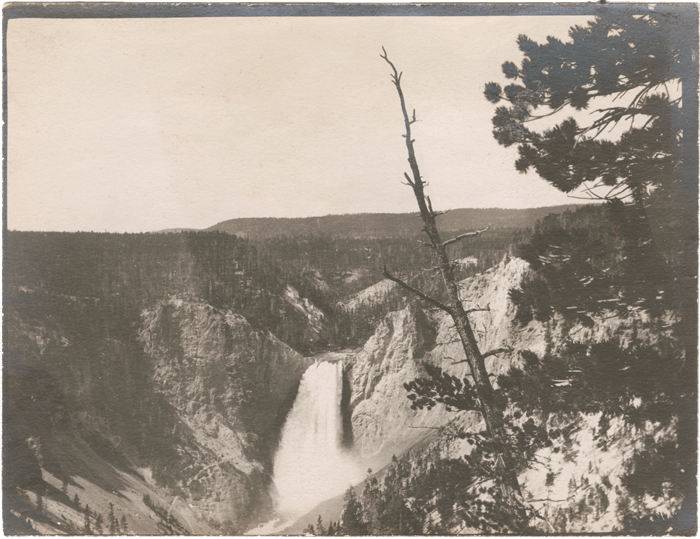By 1907 the United States was burgeoning with an appetite for travel, a desire whetted by the accurate depictions of places from around the world brought into the home by the commercial success of photography. With the expansion of the railroad, the frontier of the plains and the Rockies was a few days’ journey from the East Coast. The phrase went around, “See Europe if you will, but see America first!” Yellowstone National Park was branded as a characteristically American destination—America’s Wonderland.
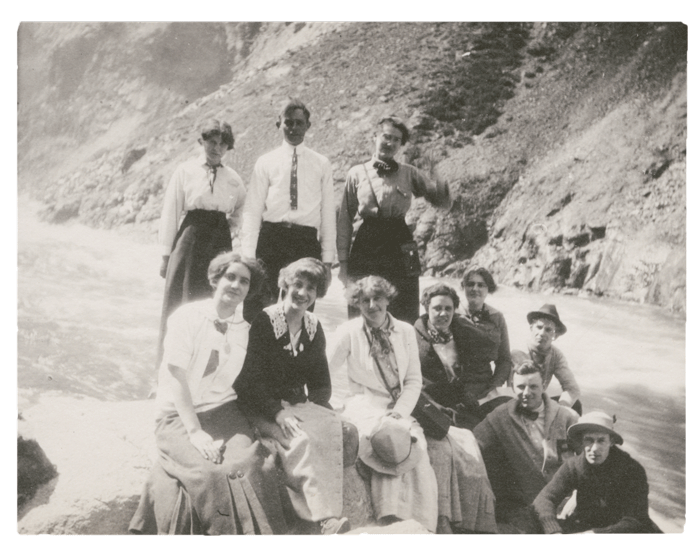
Adages such as “See America first” forged a major part of the American identity. They reflected the national sentiment that the wonder-landscapes of the United States were something to be proud of, something just as sublime as any of the sights in Europe.
Two groups of tourists, traveling through Yellowstone National Park in 1907 and 1915, took several dozen photographs during their tour of the park. By this time, box cameras had become reasonably accessible and affordable. Those people who were inspired by the landscapes and peculiarities that professional photographers captured could now easily document their own journeys as well as the landscapes they found so captivating.
Entrances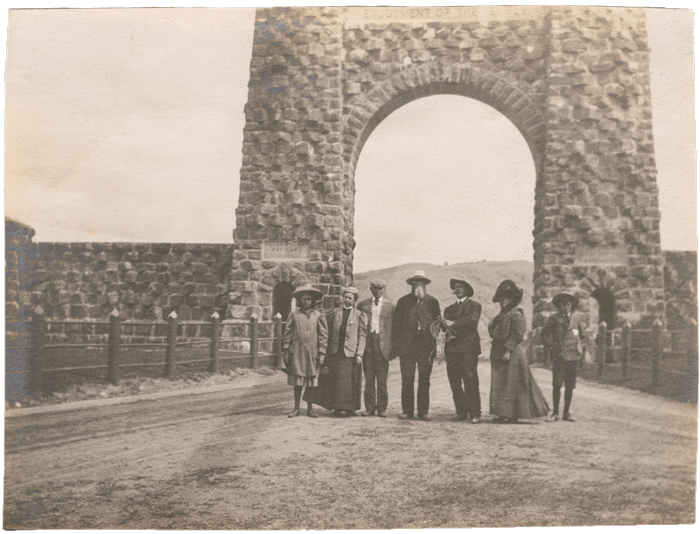
For people coming to Yellowstone by rail, towns like Gardiner, Montana, were the last stop before disembarking to the northern entrance of the park.
Tourists entering from the north were greeted by the words graven into the top of the Roosevelt Arch: “For the Benefit and Enjoyment of the People,” a phrase taken from the Park Protection Act of 1872, the law that effectively created the park.
Camp Life
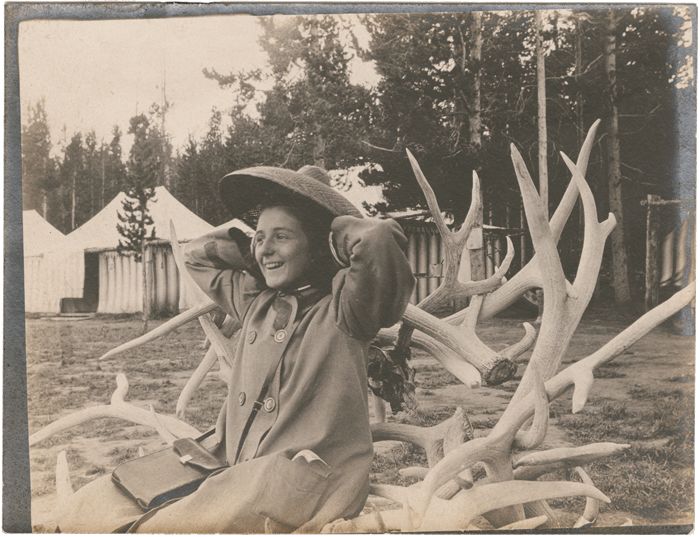
During the development of the tourist industry in Yellowstone, tent camps provided housing for visitors while large hotels were being built. But these tents later afforded low-cost options to many travelers. These camps were not without their luxuries, though: large staffs of workers would provide a simple but comfortable lodging for many tourists.
Those who thirsted to see the Wonderland but did not have enough money to fund the extravagant trip would often come through the park in groups sponsored by newspapers, fraternal organizations, churches, or educational programs.
Transportation
Before 1916 many of the well-to-do visitors would ride stagecoaches through the park. The stage drivers who were hired for a season often served as guides and occasionally even cooked lunch for the tourists.
The main tour of the park looped around in a frying pan or upside-down Q shape. All tourists would follow the one-way counterclockwise circuit around the park—a general route of 130 to 140 miles long with hotels, tent camps, and lunch stops placed at even distances along the way.
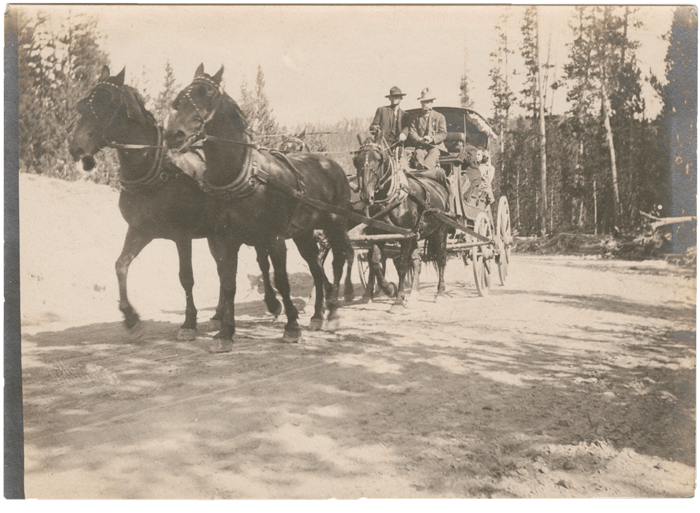
One traveler, Stephen M. Dale, wrote: “Apart even from the sight of any of those special things the very drive itself would be worth taking. The roads are good, the stages comfortable, and the view, at all points, interesting, at some points is entrancing.”
These stagecoach trips, however, still required some effort on the part of the travelers. For example, if a four-horse team were unable to provide enough horsepower to get everyone and their luggage up a steep hill, passengers would then have to get out of the stage and walk up the hill—sometimes even carrying their own luggage.
Stagecoaches filled the park until 1917, when horse-drawn vehicles were officially banned and replaced with automobiles. Many of the horses which staffed these now out-of-work coaches were sold to Canada for the First World War.
The Yellowstone Experience
Author-editor C. M. Skinner wrote: “The Yellowstone country is a reversal of common experience. Water flows up into the air, springs are hot instead of cold, rocks so slenderly balance on their pedestals that you half expect to see the long dead buffalo hanging in the air about them, exemplifying the truth of the old frontiersman’s remark that here ‘the laws of nature are petrified.’”
Visiting the strange Wonderland of northwest Wyoming has long promoted communion between visitor and vista; such experiences are often unique and personal. Since the park’s founding in 1872, photography has petrified some of the earliest personal experiences in Yellowstone. These visual journals continue even now to document the spirit of America’s Wonderland.
—Alex Turner
Citations
Quotes of travelers from Ho! For Wonderland: Travelers’ Accounts of Yellowstone, 1872-1914, edited and annotated by Lee H. Whittlesey.
Photographs from
MSS 9076; Collection of tourist photographs of Yellowstone Park via Wylie Permanent Camping Company; 20th Century Western Manuscripts and Americana; L. Tom Perry Special Collections, Harold B. Lee Library, Brigham Young University.
MSS 9063; Collection of Yellowstone Park photographs while camping with Shaw and Powell Camping Company; 20th Century Western and Mormon Manuscripts; L. Tom Perry Special Collections, Harold B. Lee Library, Brigham Young University.

